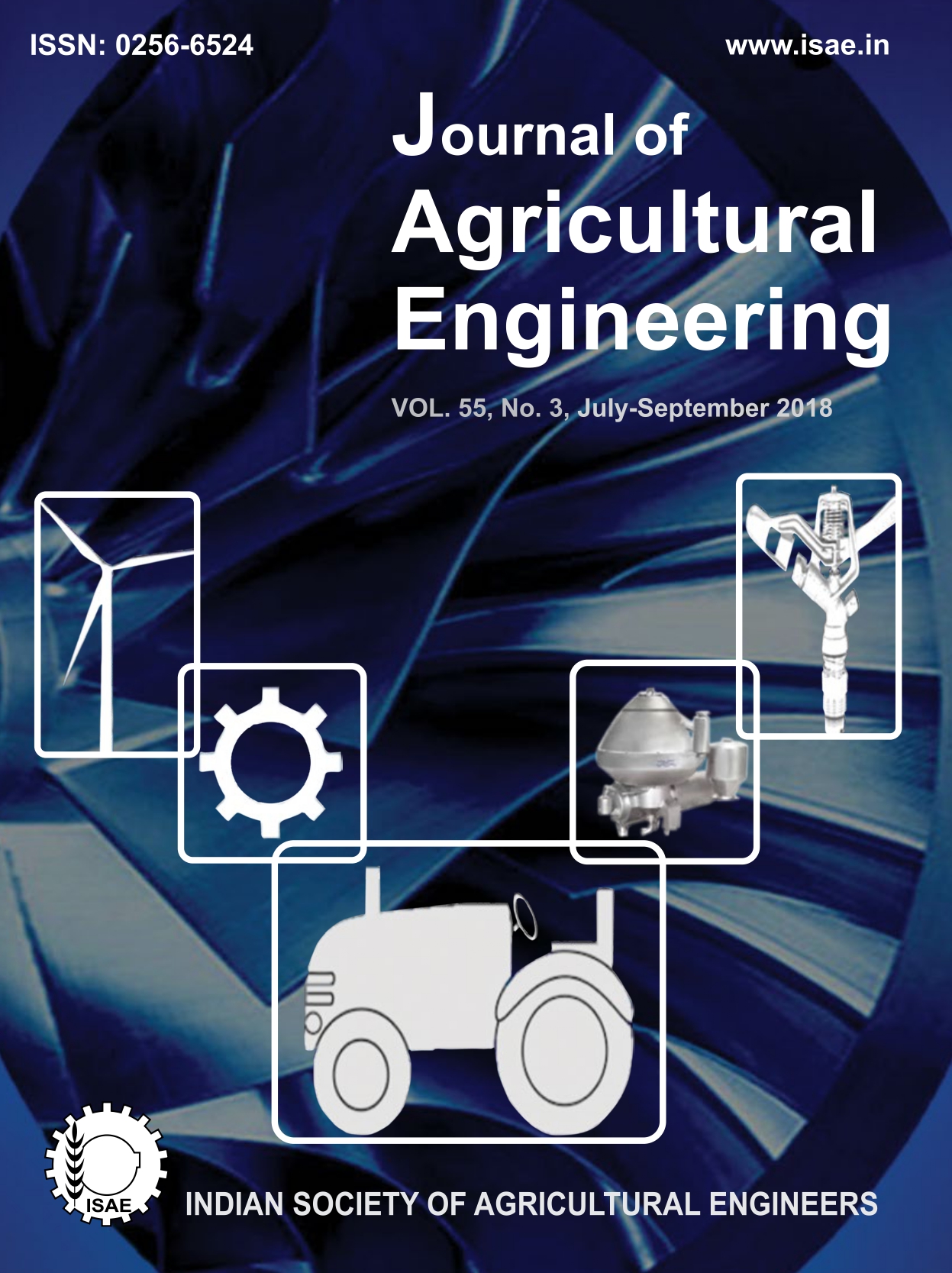Effect of Electro-spark Coating on Wear Loss of Rotavator Blades
DOI:
https://doi.org/10.52151/jae2018553.1657Keywords:
Rotavator blade, electro-spark coating, hardness, wear lossAbstract
Rotavator has been increasingly used in agricultural fields. Under abrasive conditions for ground engaging tools, rotavator blades require frequent replacement resulting to increasing machine downtime and maintenance cost. Electric spark coating (ESC) technique was evaluated on two different commercially available blades with tungsten carbide, Stellite-21 and chromium carbide coating materials to improve their life. Coating materials were applied with three different thicknesses on the blades.Wear loss of the second blade with tungsten carbide 4th mode treatment was about 0.80 % per hour less than the other treatments for both blades. Hardness (58.33 HRA) of the second blade with chromium carbide 4th mode treatment was highest among all treatments and blades. The build-up height with chromium carbide 6th mode treatment was 160.8 µm.
References
Alexander V R; Orhan S. 2003. The use of bipolar current pulses in electrospark alloying of metal surfaces. Surf. Coat. Technol., 168 (2-3), 129-135.
Kang A S; Grewal J S; Jain D; Kang S. 2012. Wear behaviour of thermal spray coatings on rotavator blade. J. Therm. Spray Technol., 21 (2), 355-359.
Kang A S; Cheema G S; Singla S. 2014. Wear behaviour of hard facings on rotary tiller blades. Procedia Eng., 97, 1442 – 1451.
Karoonboonyanan S; Salokhe V M; Niranatlumpong P. 2007. Wear resistance of thermally sprayed rotary tiller blades. Wear-LAUSANNE, 263 (1-6), 604–608.
Linmin Wu; Xingye Guo; Jing Zhang. 2014. Abrasive resistant coatings-A review. Lubricants 2, 66-89.
Mohanty M; Smith R W; Bonte M D; Celis L P; Lugscheider E. 1996. Sliding wear behaviour of thermally sprayed 75/25 Cr3C2/Ni Cr wear resistant coatings. Wear., 198, 251-266.
Mruthunjaya M; Parashivamurthy K I. 2014. Micro structural study and tribological behaviour of wc-co coatings on stainless steel produced by HVOF spray technique.Int. J. Mech. Eng. Technol., 5(1), 132-139.
Murthy J K N; Venkataraman B. 2006. Abrasive wear behaviour of WC–Co Cr and Cr3C2–20 (Ni Cr) deposited by HVOF and detonation spray processes. Surf. Coat. Technol., 200, 2642– 2652.
Musil J. 2012. Hard nanocomposite coatings: Thermal stability, oxidation resistance and toughness. Surf. Coat. Technol., 207, 50–65.
Roger N; Johnson G L; Sheldon. 1986. Advances in the electrospark deposition coating process. J. Vac. Sci. Technol., A4 (6), 2740-2746.














